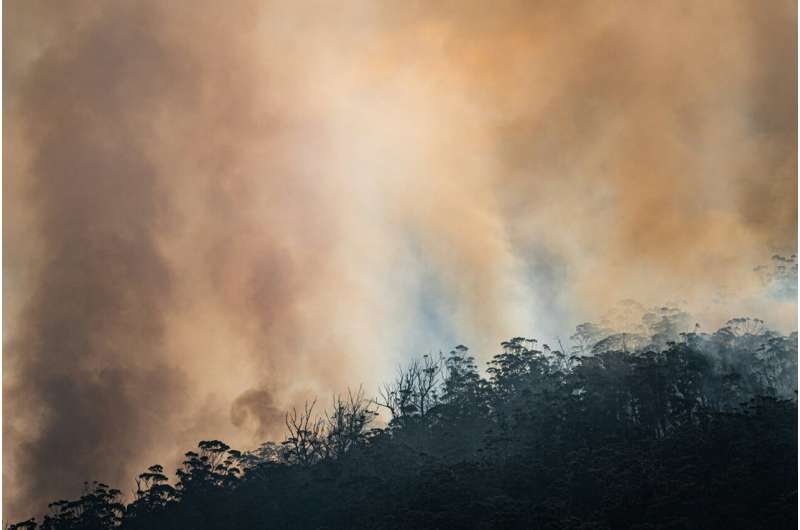This article has been reviewed according to Science X's editorial process and policies. Editors have highlighted the following attributes while ensuring the content's credibility:
fact-checked
peer-reviewed publication
trusted source
proofread
Bushfire smoke sparks surges in Western Australia hospital admissions

New research shows a strong link between smoke from bushfires and an increase in Perth hospital admissions for heart and lung problems, highlighting the health dangers posed by fine particulate matter (PM2.5).
The study analyzed more than half a million hospital admissions from 2015 to 2017, using a detailed smoke exposure model to track PM2.5 levels in Perth and found that older adults, children and people from disadvantaged areas were at higher risk of hospitalization due to bushfire smoke.
Key findings:
- High PM2.5 levels led to a 3% increase in overall hospital admissions and a 7% increase in heart-related visits the following day.
- Same-day exposure to high PM2.5 levels increased asthma hospital admissions by 16%, with children experiencing a 93% rise in asthma admissions the next day.
- Hospital admissions for heart arrhythmia increased by 12% on same-day exposure with high smoke levels.
The lead scientific investigator and study author, Associate Professor Adeleh Shirangi from Curtin's School of Population Health, said particulate matter smaller than 2.5 microns, known as PM2.5, is a major health concern.
"These tiny particles can be inhaled into the lungs and even enter the bloodstream," Associate Professor Shirangi said.
"Our study showed that people living in lower socioeconomic areas were more significantly affected by elevated PM2.5 levels, with higher rates of hospital admissions for both respiratory and cardiovascular conditions."
The study found a 154% increase in angina admissions and a 12% increase in heart failure admissions among disadvantaged groups following high bushfire smoke exposure.
Associate Professor Shirangi said the findings underscore the need for effective public health strategies to protect high-risk groups.
"Australians are frequently exposed to pollutants from bushfires, and smoke is the leading cause of increased fine particulate matter levels in Perth," Associate Professor Shirangi said.
"As climate change leads to more frequent and intense wildfires, understanding and mitigating the health impacts becomes increasingly critical.
"Using air filters and masks can help reduce exposure to harmful smoke, and monitoring air quality alerts during the bushfire season could help hospitals better prepare for patient surges."
Information on smoke hazards from bushfires is available on the Department of Health's website.
This study is part of a broader research project which is a collaborative effort between the WA Department of Health, Curtin University, Murdoch University, the University of Western Australia, the University of Tasmania, and the Western Australian Bureau of Meteorology, as well as NGIS who provided spatial technology data.
The paper, titled "Impact of elevated fine particulate matter PM2.5 during landscape fire events on cardio-respiratory hospital admissions in Perth, Western Australia," is published in the Journal of Epidemiology and Community Health.
More information: Adeleh Shirangi et al, Impact of elevated fine particulate matter (PM2.5) during landscape fire events on cardiorespiratory hospital admissions in Perth, Western Australia, Journal of Epidemiology and Community Health (2024). DOI: 10.1136/jech-2024-222072



















